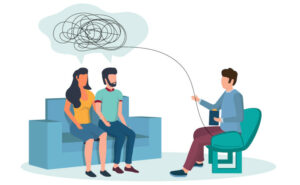Family is the cornerstone of our lives, providing love, support, and companionship. However, like any relationship, family dynamics can sometimes become strained, leading to conflicts and emotional challenges. When these issues become overwhelming, many individuals and families turn to family therapy for help. In this article, we will explore the cost of family therapy, factors that influence it, ways to reduce expenses, and how to make informed financial decisions regarding your family’s well-being.
Contents
What is Family Therapy?

Family therapy, also known as family counseling or couples therapy, is a specialized form of psychotherapy that focuses on improving communication and resolving conflicts within families or couples. It aims to foster healthy relationships and promote emotional well-being among family members.
Family therapy plays a crucial role in addressing various issues, such as marital conflicts, parent-child relationships, substance abuse, and mental health challenges. It provides a safe space for open communication and problem-solving, ultimately strengthening family bonds.
Factors Affective Family Therapy Cost
Family therapy costs can vary widely depending on several factors, including the therapist’s qualifications, location, duration of sessions, and the specific type of therapy being provided. Here are some key factors to consider when understanding family therapy costs:
- Therapist Qualifications: The qualifications and experience of the therapist can significantly impact the cost of family therapy. Licensed and experienced therapists typically charge more than those who are still in training or not yet licensed.
- Location: The cost of therapy can vary depending on where you live. In urban areas or regions with a high cost of living, therapy tends to be more expensive than in rural areas.
- Session Duration: Family therapy sessions can vary in length, typically ranging from 45 minutes to 90 minutes. Longer sessions are often more expensive than shorter ones.
- Frequency of Sessions: The frequency of sessions also affects the cost. Some families may attend therapy weekly, biweekly, or on a less frequent basis. More frequent sessions will increase the overall cost.
- Type of Therapy: Different types of family therapy may have varying costs. For example, traditional in-person therapy may cost more than online or teletherapy sessions.
- Insurance Coverage: Check with your health insurance provider to see if they cover family therapy. If they do, it can significantly reduce your out-of-pocket expenses. Be sure to understand any copayments or deductibles associated with your insurance plan.
- Sliding Scale Fees: Some therapists and therapy centers offer sliding scale fees based on income, making therapy more affordable for individuals and families with lower incomes.
- Initial Assessment or Consultation: Some therapists charge an additional fee for the initial assessment or consultation session to evaluate the family’s needs and goals.
- Group vs. Individual Family Therapy: Group family therapy sessions, where multiple families or individuals participate together, maybe more cost-effective than individual family therapy.
- Additional Costs: Consider any additional costs, such as travel expenses if the therapist’s office is not nearby, or fees for missed appointments or late cancellations.
Average Cost of Family Therapy

National Averages
On average, a family therapy session can cost between $75 and $200 per hour in the Australia. This cost can vary widely based on location and therapist qualifications.
Regional Variances
Therapy costs may differ significantly by region, with major cities generally having higher fees. It’s essential to research local therapy rates in your area.
Sliding Scale Fees
Some therapists offer sliding scale fees based on your income and ability to pay. This can make therapy more affordable for individuals and families with limited financial resources.
Reducing Family Therapy Costs
Family therapy can be a valuable investment in your family’s well-being, but it’s also important to manage costs effectively. Here are some strategies for reducing family therapy costs:
- Check Insurance Coverage: Start by contacting your health insurance provider to inquire about coverage for family therapy. Some insurance plans cover a portion of the costs, which can significantly reduce your out-of-pocket expenses. Be sure to understand any copayments, deductibles, or limitations on the number of sessions covered.
- In-Network Providers: If you have insurance, consider seeing therapists who are in-network with your insurance plan. In-network providers often have negotiated lower rates with insurance companies, resulting in lower out-of-pocket costs for you.
- Sliding Scale Fees: Some therapists offer sliding scale fees based on income. If your family has a limited budget, inquire about reduced fees based on your financial situation. Sliding scale fees can make therapy more affordable.
- Group Therapy: Group family therapy sessions, where multiple families or individuals participate together, are often more cost-effective than individual sessions. Inquire if the therapist offers group therapy options.
- Online Therapy: Online or teletherapy sessions can sometimes be more affordable than in-person therapy because they eliminate travel costs and allow you to work with therapists from different geographic areas. Ensure that your chosen therapist is licensed to provide services in your state or country.
- Nonprofit or Community Agencies: Some nonprofit organizations and community agencies offer family therapy services at reduced rates or on a sliding scale. These agencies often focus on helping individuals and families with limited financial resources.
- Employee Assistance Programs (EAPs): If you or a family member has access to an EAP through your workplace, take advantage of it. EAPs typically offer a limited number of free or low-cost therapy sessions to employees and their families.
- Flexible Scheduling: Consider scheduling therapy sessions less frequently if appropriate for your family’s needs. Biweekly or monthly sessions may be more budget-friendly than weekly sessions.
- Explore Self-Help Resources: In addition to therapy, explore self-help resources, books, workshops, or support groups that can provide valuable guidance and support at a lower cost.
- Communication and Goal-Setting: Make the most of each therapy session by being open and honest about your concerns, goals, and progress. Effective communication can help you achieve your goals more efficiently, potentially reducing the number of sessions required.
- Homework and Practice: Many therapists assign homework or exercises for families to work on between sessions. Completing these assignments can expedite progress, potentially leading to shorter therapy durations.
Quality vs. Cost

The choice between quality and cost is a common consideration in various aspects of life, including products, services, and decisions about how to allocate resources. Here’s a breakdown of this trade-off and some factors to consider when making such choices:
Quality:
- Better Outcomes: Opting for higher quality often leads to better results, satisfaction, and long-term benefits. This can be true for products, services, and investments in various areas of life.
- Durability: Higher-quality products and services tend to be more durable and reliable, reducing the need for frequent replacements or repairs.
- Expertise: Quality often comes with expertise and experience. Choosing high-quality professionals or services can mean receiving better advice, care, or results.
- Long-Term Value: In many cases, higher-quality choices represent better long-term value. While the upfront cost may be higher, the total cost of ownership over time can be lower due to reduced maintenance and replacements.
- Customer Satisfaction: Quality tends to lead to higher customer satisfaction. Satisfied customers are more likely to be loyal and recommend the product or service to others.
Cost:
- Affordability: Lower-cost options are often more accessible to a broader range of people, making essential goods and services more affordable.
- Budget Constraints: For individuals and organizations with tight budgets, cost considerations are paramount. Choosing lower-cost options can help manage financial constraints.
- Trade-Offs: In some cases, a lower-cost option may require trade-offs in terms of quality, features, or durability. It’s important to assess whether these trade-offs are acceptable for your needs.
- Short-Term Savings: Lower-cost options can provide immediate savings, which can be important for individuals or organizations with limited resources.
- Market Competition: Competition in the marketplace often drives down costs, benefiting consumers by offering more affordable choices.
Financial Planning for Family Therapy
Financial planning for family therapy involves managing the costs associated with therapy while ensuring that your family’s mental and emotional well-being is a priority. Here are steps to help you create a financial plan for family therapy:
- Set Clear Goals: Begin by identifying your family’s therapy goals. What specific issues or concerns are you addressing through therapy? Understanding your objectives will help you plan effectively.
- Assess Your Budget: Review your current financial situation, including income, expenses, savings, and debt. Determine how much you can allocate to family therapy within your budget.
- Research Therapy Costs: Contact potential therapists or therapy centers to inquire about their fees and any available payment options. Consider the factors mentioned earlier, such as insurance coverage, sliding scale fees, and online therapy, when evaluating costs.
- Determine Frequency and Duration: Discuss with the therapist the recommended frequency and duration of therapy sessions. This will help you estimate the total cost over the course of treatment.
- Insurance Coverage: Contact your health insurance provider to understand your coverage for family therapy. If therapy is covered, find out about copayments, deductibles, and any pre-authorization requirements.
- Plan for Out-of-Pocket Expenses: Be prepared for out-of-pocket expenses, such as copayments, deductibles, or costs associated with sessions that may not be covered by insurance.
Conclusion
Family therapy is a valuable resource for resolving conflicts and improving relationships within families and couples. While the cost of therapy may be a concern, various factors can influence the overall expense. By exploring affordable options, researching therapists, and discussing costs openly, you can prioritize your family’s emotional well-being without breaking the bank.
If you are looking for, Online Family Counseling TherapyMantra can help: Book a trial Online therapy session.


